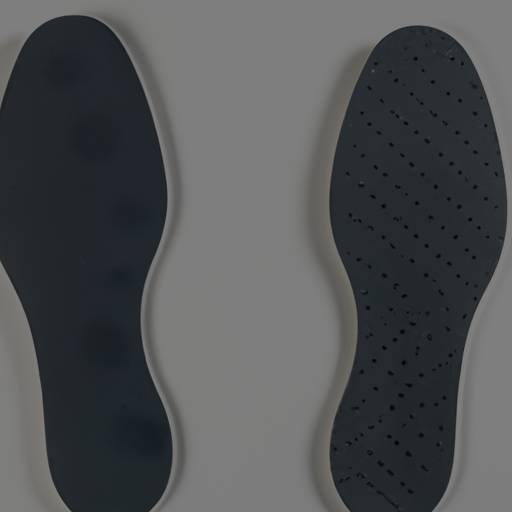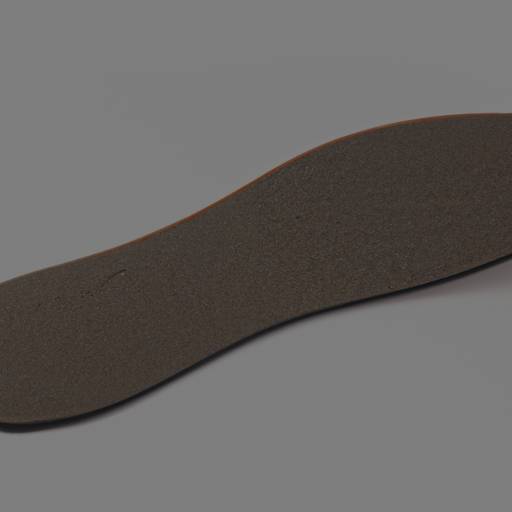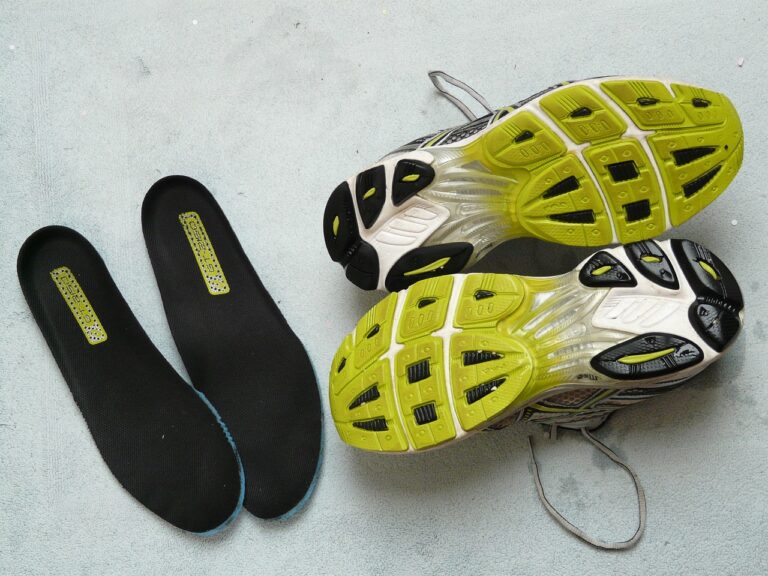Do Memory Foam Insoles Cause Ankle Pain?
Understanding Memory Foam Insoles
Memory foam insoles have gained popularity as a comfortable and supportive option for individuals seeking relief from foot discomfort. Let’s delve into what memory foam insoles are and explore their benefits.
What Are Memory Foam Insoles?
Memory foam insoles are inserts made from a type of polyurethane foam that molds to the shape of your foot when pressure is applied. This unique characteristic allows the insoles to provide customized support and cushioning, adapting to the contours of your feet. The memory foam material is known for its ability to retain its shape and provide long-lasting comfort.
Memory foam insoles are designed to be placed inside your shoes, providing an additional layer of cushioning and support. They can help alleviate pressure points, reduce impact on the feet, and improve overall comfort during walking or standing. It’s important to note that memory foam insoles are not a substitute for properly fitted shoes, but rather an enhancement to improve the overall fit and feel.
Benefits of Memory Foam Insoles
Memory foam insoles offer several benefits that make them a popular choice among individuals seeking relief from foot discomfort. Some of the key benefits include:
- Pressure Relief: The conforming nature of memory foam insoles helps distribute weight evenly across the foot, reducing pressure on specific areas. This can be particularly beneficial for individuals with conditions such as plantar fasciitis or metatarsalgia.
- Shock Absorption: The cushioning properties of memory foam insoles help absorb shock and impact during walking or running, providing a more comfortable experience and reducing strain on the feet and joints.
- Customized Support: Memory foam insoles contour to the unique shape of your feet, providing personalized support to areas that need it most. This can help improve overall foot alignment and reduce discomfort associated with improper foot mechanics.
- Temperature Sensitivity: Memory foam insoles are sensitive to body heat, which means they become softer and more pliable as they warm up with body temperature. This allows for a more comfortable and customized fit over time.
- Improved Comfort: The soft and cushioning nature of memory foam insoles can enhance the overall comfort of your shoes, making them suitable for all-day wear.
It’s important to note that while memory foam insoles offer many benefits, they may not be suitable for everyone. Factors such as foot type, specific foot conditions, and personal preferences should be taken into consideration when selecting the right type of insoles. For more information on choosing the best insoles for your needs, check out our article on best arch support insoles.
Understanding the features and benefits of memory foam insoles is essential for making an informed decision about their suitability for your foot health. Remember to consult with a healthcare professional or podiatrist if you have specific concerns or conditions related to your feet.
Ankle Pain and Insoles
Ankle pain can be a common issue for many individuals, and it’s natural to wonder if memory foam insoles could be a potential cause. Understanding the common causes of ankle pain and the role of insoles can help shed light on this matter.
Common Causes of Ankle Pain
Ankle pain can arise from various factors, including injuries, overuse, and certain medical conditions. Some common causes of ankle pain include:
- Sprained Ankle: Ankle sprains occur when the ligaments supporting the ankle joint are stretched or torn, often resulting from a sudden twist or roll of the foot.
- Achilles Tendonitis: Inflammation of the Achilles tendon, which connects the calf muscles to the heel, can cause pain in the back of the ankle.
- Arthritis: Conditions like osteoarthritis or rheumatoid arthritis can affect the ankle joint, leading to pain, stiffness, and swelling.
- Tendinitis: Inflammation of the tendons in the ankle can cause discomfort and limited mobility.
- Fractures: Ankle fractures, such as a broken bone in the ankle joint or the surrounding bones, can result from traumatic injuries.
These are just a few examples of the many possible causes of ankle pain. It’s important to consult a healthcare professional to determine the exact cause of your ankle pain and develop an appropriate treatment plan.
Can Memory Foam Insoles Cause Ankle Pain?
Memory foam insoles are typically designed to provide cushioning and support to the feet. However, in some cases, they may not be the ideal choice for individuals experiencing ankle pain.
Memory foam insoles primarily focus on providing comfort and pressure relief to the feet. While they can help alleviate discomfort in the foot area, they may not offer the necessary stability and ankle support required for addressing ankle pain.
People with ankle pain may benefit more from insoles that specifically target ankle support and stability. These insoles often feature features like arch support, heel cups, or ankle braces that can help stabilize the ankle joint and reduce strain on the surrounding structures.
It’s important to note that each individual is unique, and the impact of memory foam insoles on ankle pain can vary. Some individuals may find relief with memory foam insoles, while others may require specialized insoles or additional treatment measures.
If you’re experiencing ankle pain and considering using insoles, it’s advisable to consult with a healthcare professional or a podiatrist. They can evaluate your specific condition, provide recommendations tailored to your needs, and guide you towards the most suitable insole options.
In the next section, we will explore the factors to consider when selecting insoles for ankle pain, including arch support, proper fit, and personal sensitivities. Stay tuned to find the best solutions for managing ankle pain with insoles.
Factors to Consider
When it comes to selecting the right insoles for ankle pain, there are several factors to consider. These factors play a crucial role in ensuring that the insoles provide the necessary support and comfort for your ankles. Here are three important factors to keep in mind:
Arch Support and Stability
Arch support is essential for maintaining proper alignment and stability in the feet and ankles. Insoles with adequate arch support help distribute weight evenly and reduce stress on the ankles. They can also help correct overpronation or supination, which can contribute to ankle pain.
Different types of insoles offer varying levels of arch support. Rigid arch support provides maximum stability, while semi-rigid or flexible arch support offers a balance between support and cushioning. It’s important to choose insoles that align with your specific arch type and provide the necessary support for your feet and ankles. For more information on arch support insoles, check out our article on best arch support insoles.
Proper Fit and Alignment
Proper fit and alignment of the insoles are crucial for preventing ankle pain. Ill-fitting insoles can cause discomfort and may even exacerbate existing ankle issues. When selecting insoles, ensure that they match the size and shape of your shoes. Insoles that are too small or too big can lead to improper foot alignment, which can put strain on the ankles.
Insoles should also provide proper cushioning and support to areas of the foot where it’s needed most. This includes adequate padding in the heel and arch areas, as well as proper shock absorption to reduce impact on the ankles. It’s important to choose insoles that align with the shape of your feet and provide the necessary support for your ankles.
Personal Sensitivities and Preferences
Everyone’s feet and ankles are unique, and what works for one person may not work for another. Consider any personal sensitivities or preferences you may have when selecting insoles. Some individuals may prefer softer cushioning, while others may prefer firmer support. It’s important to listen to your body and choose insoles that feel comfortable and supportive to you.
Additionally, if you have any specific foot conditions or sensitivities, such as plantar fasciitis or high arches, you may require specialized insoles that address those specific needs. Consulting with a healthcare professional or podiatrist can provide valuable insights and recommendations based on your individual circumstances.
By considering factors such as arch support, proper fit and alignment, and personal sensitivities, you can select the right insoles for your ankle pain. Remember, it’s important to prioritize your comfort and seek professional advice if needed.
Managing Ankle Pain with Insoles
If you experience ankle pain and are considering using insoles for relief, it’s important to understand how to manage your pain effectively. Here are some key strategies to consider when using insoles to alleviate ankle pain.
Choosing the Right Insoles for Ankle Pain
Selecting the appropriate insoles for your ankle pain is crucial for finding relief. Look for insoles that provide adequate arch support and stability. These features help to promote proper alignment and reduce strain on your ankles. For more information on the best insoles for arch support, check out our article on best arch support insoles.
In addition to arch support, consider the cushioning provided by the insoles. Opt for insoles with extra cushioning to help absorb shock and reduce the impact on your ankles during walking or running. This can help alleviate discomfort and prevent further aggravation of your ankle pain.
Gradual Adaptation and Break-In Period
When you start using insoles for ankle pain, it’s important to allow your feet and ankles time to adapt. Begin by wearing the insoles for short periods, gradually increasing the duration over time. This allows your feet and ankles to adjust to the new support provided by the insoles. During the initial stages, it’s normal to experience some discomfort or mild soreness, but this should subside as your body adapts. If the pain persists or worsens, consult a healthcare professional for further guidance.
Seeking Professional Advice
If you’re experiencing persistent ankle pain despite using insoles, it’s essential to seek professional advice. A healthcare provider, such as a podiatrist or orthopedic specialist, can evaluate your condition and provide personalized recommendations. They may suggest additional treatments or therapies to address the underlying cause of your ankle pain. Don’t hesitate to consult a professional if you have concerns or need guidance on managing your ankle pain effectively.
By choosing the right insoles, allowing for a gradual adaptation period, and seeking professional advice when necessary, you can effectively manage ankle pain and find relief. Remember to prioritize your foot health and address any concerns promptly to prevent further discomfort or complications.
Taking Care of Your Feet
While memory foam insoles can provide comfort and support for your feet, it’s important to take a holistic approach to foot health. In addition to using insoles, there are other factors to consider and practices to adopt that can contribute to the overall well-being of your feet.
Additional Tips for Foot Health
To maintain healthy feet, consider the following tips:
- Choose the right footwear: Opt for shoes that provide proper arch support, cushioning, and a comfortable fit. Visit our article on what shoe brands do podiatrists recommend for recommendations.
- Practice good hygiene: Keep your feet clean and dry to prevent infections and unpleasant odors. Regularly wash your feet with mild soap and water, and thoroughly dry them, especially between the toes.
- Trim your toenails: Trim your toenails straight across and avoid cutting them too short to prevent ingrown toenails. If you have difficulty trimming your nails, consider seeking professional help from a podiatrist.
- Moisturize your feet: Apply a moisturizing cream or lotion to keep your feet hydrated, especially if you have dry or cracked skin. Be sure to avoid applying lotion between the toes to prevent excessive moisture buildup.
- Wear breathable socks: Choose socks made of natural fibers like cotton or moisture-wicking materials to allow proper ventilation and reduce the risk of fungal infections.
- Rotate your shoes: Alternate the shoes you wear to allow them to air out and reduce the buildup of moisture and odor. This also helps prevent excessive wear and tear on specific areas of your shoes.
Stretching and Strengthening Exercises
Incorporating stretching and strengthening exercises into your daily routine can help improve foot flexibility, mobility, and strength. Here are a few exercises to consider:
- Toe curls: Sit comfortably and place a small towel on the floor in front of you. Use your toes to scrunch up the towel, then release. Repeat this exercise several times to strengthen the muscles in your feet.
- Calf stretches: Stand facing a wall with one leg in front of the other. Keeping your back leg straight and your heel on the ground, bend your front knee and lean forward, feeling a stretch in your calf. Hold the stretch for 30 seconds, then switch legs.
- Ankle rotations: Sit on a chair with your feet flat on the ground. Lift one foot off the floor and rotate your ankle clockwise, then counter-clockwise. Repeat with the other foot.
- Foot arch stretches: Sit on the edge of a chair and place a tennis ball or a similar object on the floor. Roll your foot over the ball, applying gentle pressure to massage the arch of your foot.
Regularly performing these exercises can help improve flexibility, reduce muscle tightness, and alleviate common foot problems associated with standing or walking for extended periods.
Regular Foot Care Routine
In addition to the above tips and exercises, establishing a regular foot care routine can help keep your feet healthy. Here are some practices you can incorporate into your routine:
- Inspect your feet: Regularly check your feet for any signs of redness, swelling, cuts, or blisters. Pay attention to any changes in the appearance or sensation of your feet and consult a healthcare professional if you notice anything unusual.
- Clean and moisturize: Wash your feet daily with warm water and mild soap, then thoroughly dry them, paying special attention to the areas between your toes. After drying, apply a moisturizing cream or lotion to keep your skin soft and hydrated.
- Exfoliate regularly: Use a gentle foot scrub or a pumice stone to remove dead skin cells and calluses. Be careful not to overdo it, as excessive exfoliation can cause irritation or injury.
- Elevate your feet: At the end of a long day, elevate your feet to promote blood circulation and reduce swelling. Prop your feet up on a cushion or pillow while sitting or lying down.
By incorporating these additional tips for foot health, performing stretching and strengthening exercises, and following a regular foot care routine, you can support the well-being of your feet and enhance the benefits of using memory foam insoles. Remember, it’s essential to listen to your body and seek professional advice if you experience persistent foot pain or discomfort.



